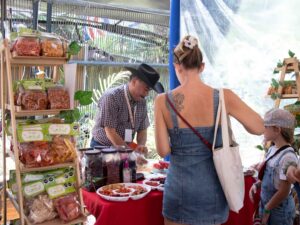
By: 4xviaje – Guillermo, Monica, Sebastian and Matias
Join us and we’ll take you on a journey through 7 of the best things to do in Rome as a Family, showing you the city’s most iconic sights and its hidden treasures.
There are countless experiences to discover in the eternal city.
As an ancient city with a rich history our visit to Rome transported us back in time. Rome is like being in a great open-air museum. On every corner there is an impressive monument or an important archaeological site. But it’s not just about history, there’s also a vibrant art scene that attracts art admirers from around the world. Some of the most famous artists in history have left their mark on the city, from Michelangelo to Bernini.
Pack your bags, grab your cameras and get ready to immerse yourself in the beauty, history and culture of one of the most enchanting cities in the world: ROME.
The Roman Colosseum is also known as the Flavian Amphitheatre, as its construction was ordered by Emperor Flavio Vespasian and his son Titus to entertain more than 50,000 spectators through duels to the death of gladiators, who were all considered celebrities in those days. heyday of the Roman Empire.
The Colosseum is one of the most famous and emblematic monuments in Rome and for good reason: it was built more than 2,000 years ago and the opening party lasted 100 days where there was much partying. It is one of the largest and best preserved ancient Roman buildings. It was an engineering marvel built in just eight years.
ROMAN COLISEUM
The Colosseum, along with the entire historic center of Rome, was admitted to the UNESCO World Heritage List in 1980 and on July 7, 2007 it was recognized as one of the 7 wonders of the modern world.

The best way to experience this incredible structure is by taking a guided tour where you can learn about its history and architecture.
TIP: If you plan your trip to Rome in summer, we advise you to take the Colosseum Night Guided Tour, it is less congested, away from the inclement sun and with unique and different images than the traditional ones in broad daylight.
THE TREVI FOUNTAIN
Another of the most popular tourist attractions in Rome is the impressive Baroque fountain La Fontana de Trevi, designed by the architect Nicola Salvi but completed by Giuseppe Pannini (familiar with the Pannini album? Will it be? Suddenly…..) in the year 1762 .
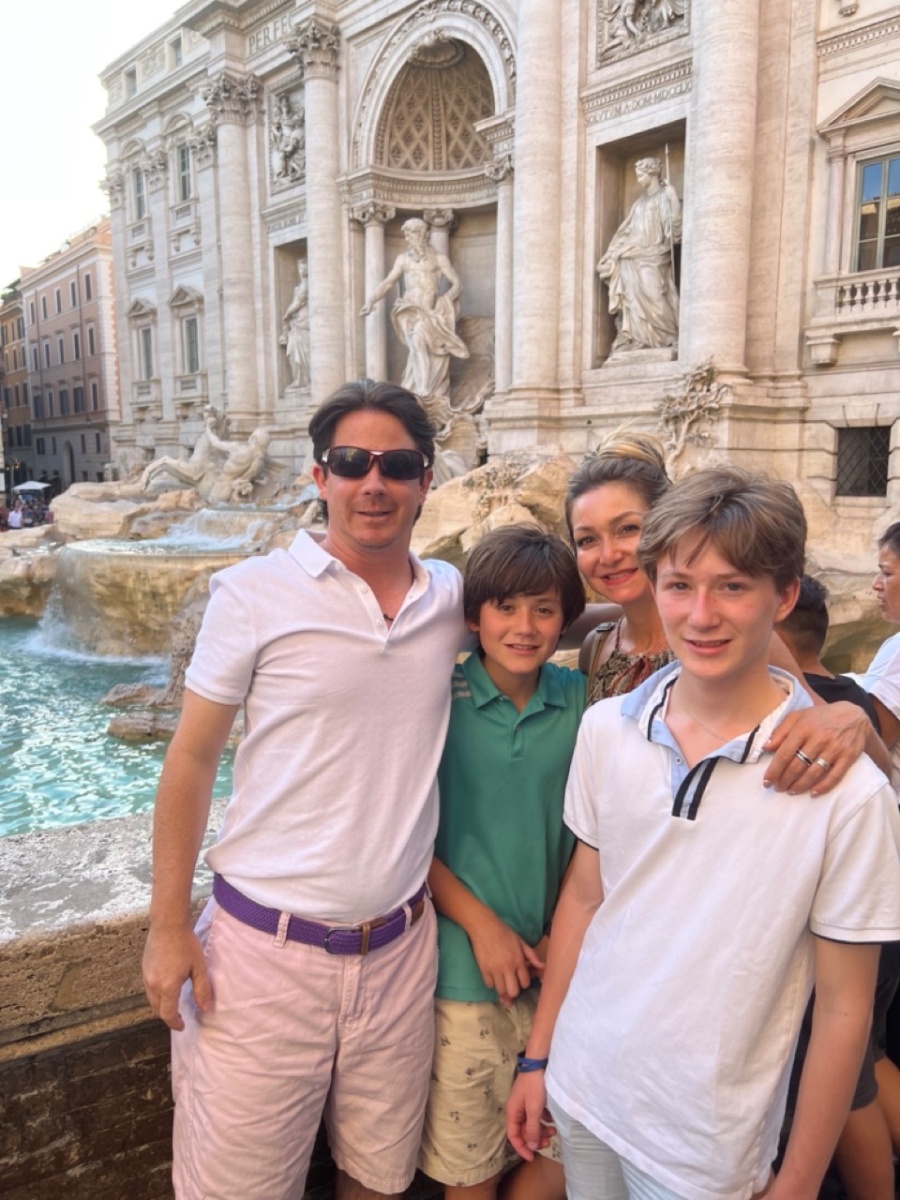
It is perhaps the most famous fountain in the world and the water that flows through it comes from one of the oldest Roman aqueducts built over 2000 years ago, and legend has it that if you throw a coin with your right hand over your shoulder left will obtain a safe return to Rome. Another interesting thing about this fountain is that thousands of euros are thrown each day and then collected at the end of the day to be donated to charities in the city, meaning that in addition to visiting it you are also contributing to a good cause by throwing a coin to the Trevi fountain during his trip to Rome.
THE PANTHEON
This ancient temple is one of the best preserved buildings from ancient Rome. It is located in Piazza della Rotonda and was originally built over 2,000 years ago as a pagan temple that later became a Christian church. The most impressive feature is its dome at the top. This is the largest unsupported dome in the world and at the top of which there is an open “Oculus” hole.
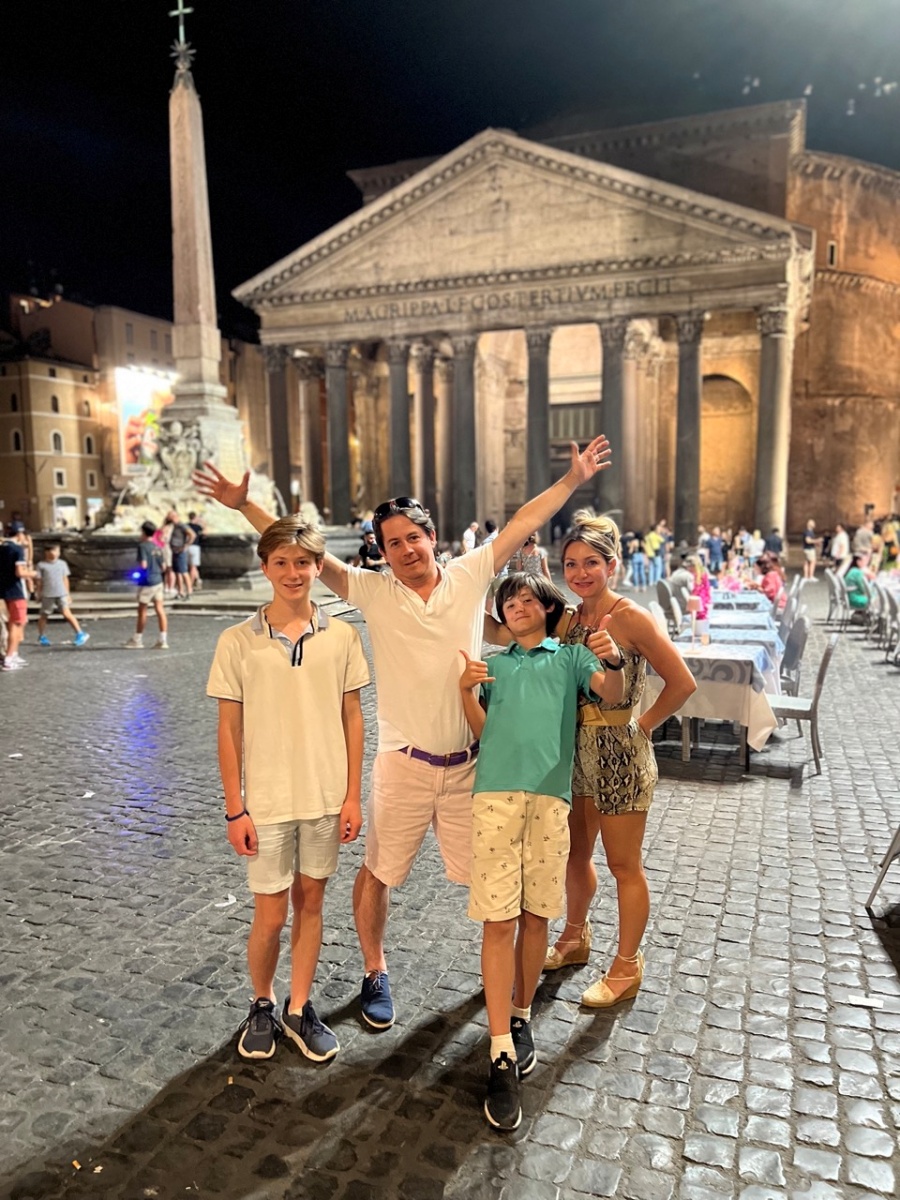
Inside is the tomb of the creator of the monument to the father of the country: Vittorio Emanuele II and the tomb of the painter Raphael, where an old stone inscription can be seen remembering one of the illustrious sons of Italy: “Here lies Raphael. While he lived he made nature fear that it would be overcome by him. When he died, nature feared to die with him.
COOKING CLASSES IN ROME WITH THE FAMILY
Learning the secrets and stories behind the local recipes from a professional chef was a truly unique experience that the 4 of us shared on this trip. Sebastián and Matías (and I) understood that good pasta is not what you buy in boxes at Jumbo or Carulla, but we learned how to make it by smearing ourselves with egg and flour.
Our culinary experience on this trip to Rome began in earnest with an aperol spritz reception for Monica and me, and lemonade for Sebastián and Matías. It was the perfect opportunity to break the ice, meet the chef and the other participants in this experience. The challenge was to each prepare their plate of food for that night: caccio & pepe pasta and the typical Italian dessert: tiramisu. Already during the practical cooking class, the expert chef was telling us stories and anecdotes, and answering the many burning questions from all of us chef apprentices that night.
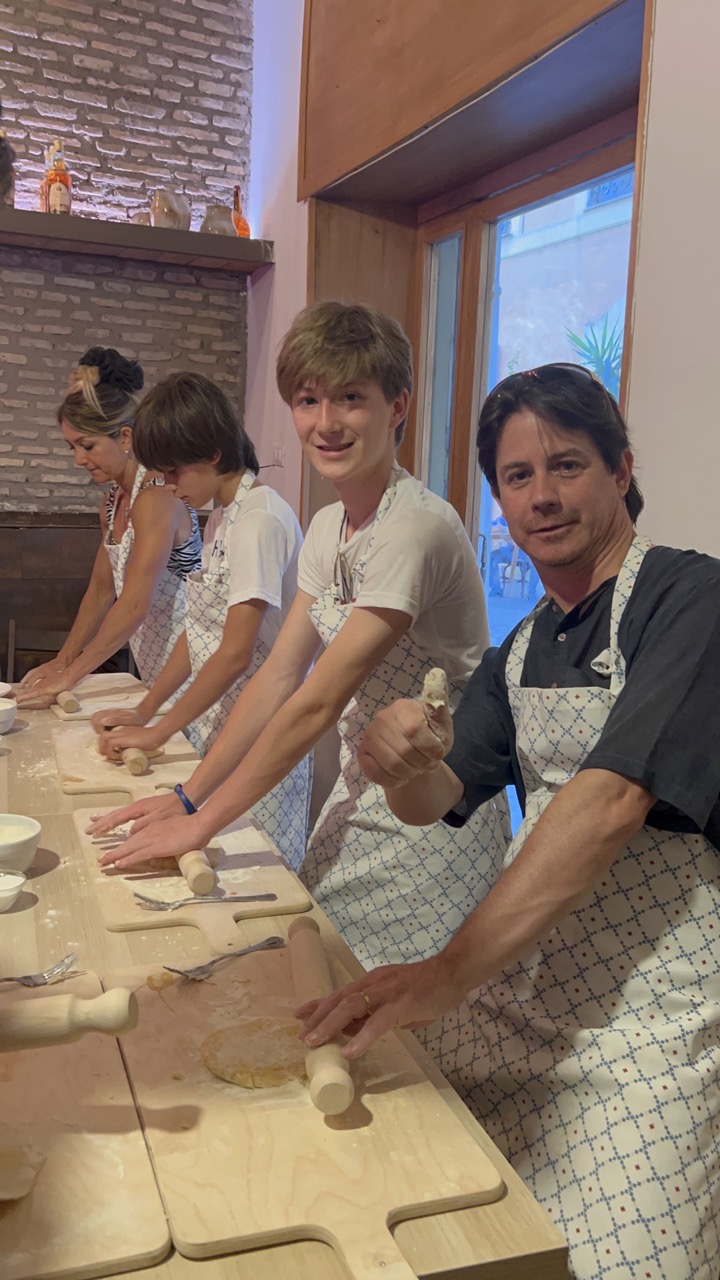
At the end of the practical class, we had the opportunity to eat the dishes that we prepared ourselves, but don’t worry anyway, because the chef is also preparing an extra large plate in case something doesn’t turn out well for anyone.
PIAZZA NAVONA
This square was an ancient Roman circus that has become one of the most touristic squares in Rome. In the center of the square you will find the Fontana dei Quattro Fiumi (The Fountain of the 4 Rivers), designed by Lorenzo Bernini for Pope Innocent X, which represents the 4 rivers that at that time were considered the most important on the planet: the Nile, the Ganges, the Danube and the Río de la Plata.
If on your trip to Rome you go with a tour guide to Piazza Navona, it is most likely that at this point you will stop at the Fontana and give them a wow story for tourists: He says that the statue that represents the Río de la Plata is horrified trying to to cover his face because he does not want to see the hideous façade of the church of Sant’Agnese built by Borromini (clearly with whom professional jealousy guided the relationship between these great architects). And Borromini made the statue of the Virgin looking the other way as if avoiding seeing the source of his enemy, the architect Lorenzo Bernini…. In the end this is pure tourist novel so don’t let yourself believe the story.
Enjoy a chocolate gelato at the 3 Fontane gelateria in one of the corners of the Plaza.
PLAZA ESPAÑA AND ITS STAIRS
The Plaza de España is named for the presence of the Palace of Spain (Palazzo di Spagna), which has been the seat of the Spanish embassy to the Holy See (not to Italy) since 1647. It is the oldest diplomatic mission in the world.
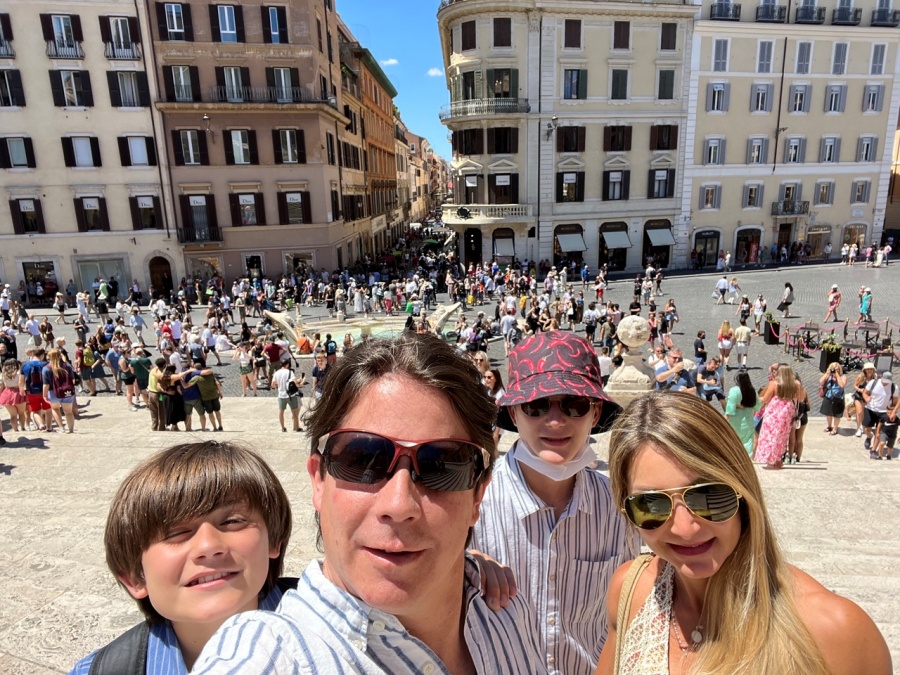
According to Google Maps, the Spanish Steps is the most photographed monument in Rome above the Roman Colosseum. At the foot of the steps below (and we confirm that there are 135 steps counted one by one in the middle of summer) there is a fountain in the shape of a barge built by Lorenzo Bernini’s father and it has the emblems of the Bernini family engraved: suns and bees .
VILLA BORGHESE
This is the third largest park in Europe and is located in the very center of Rome. This beautiful green park is ideal to enjoy a small picnic, a coffee or a gelato in one of the small cafeterias that are located in the park and see both residents and tourists having a good time in the park. You can rent bicycles (bici pincio) to tour it with the family and taking turns pedaling.
We also arrive at the edge of the lake in the park where you can rent rowing boats (it costs about 3 or 4 euros per person and lasts twenty minutes). The lake is surrounded by the Viale del Lago promenade, from which good views of the park can be enjoyed, among which the Temple of Asclepius, the Greek god of medicine, stands out.
The park is easily reached by metro (Spagna station).
THE BEST TIME TO TRAVEL TO ROME
Rome is a destination that attracts visitors from all over the world throughout the year. It is best to plan your visit based on your personal preferences in terms of weather and influx of tourists.
SUMMER
Summer in Rome is particularly hot, going out between 2pm and 6pm in summer is a challenge in itself, absurdly hot. This is the most popular time of the year to visit Rome, which means it is swarming with tourists.
PRIMAVERA
Spring is an ideal time to visit Rome. Spring flowers bloom and the heat is not an impediment to walking through the city at any time of the day.
AUTUMN
The arrival of autumn coincides with the departure of summer tourists to their places of origin, making this a good season to visit Rome without the hubbub of summer.
WINTER
Except for the Christmas and New Year weeks, winter is the quietest time to visit Rome. It is low season with cool temperatures (with some rain) but without crowds.
Source: https://alanxelmundo.com/roma-en-familia/?utm_source=rss&utm_medium=rss&utm_campaign=roma-en-familia
